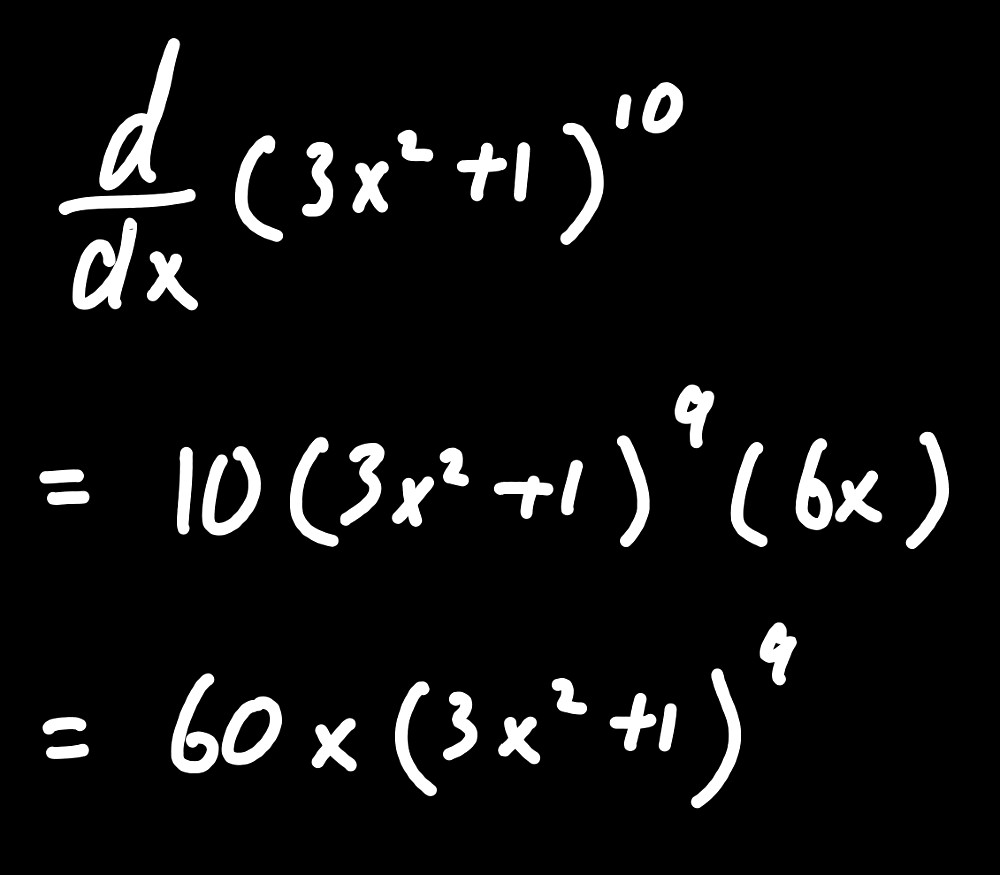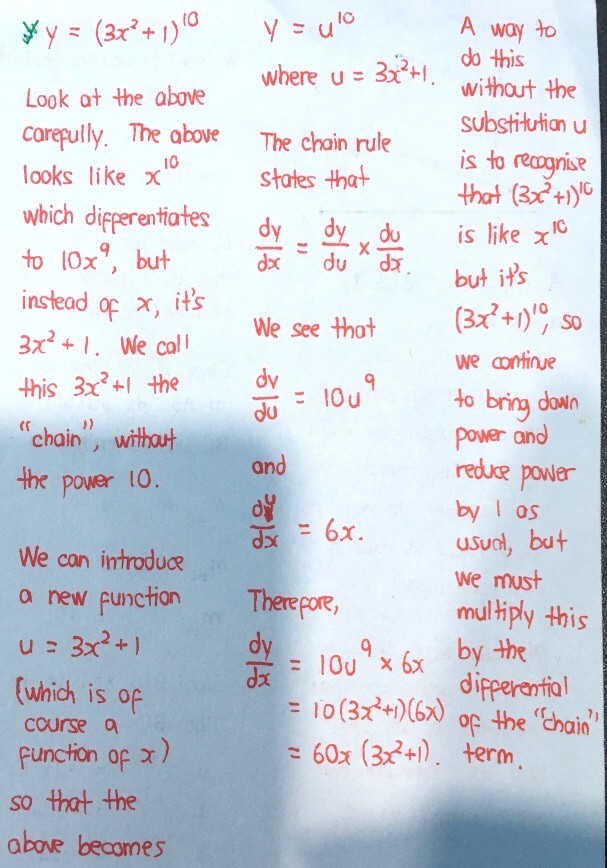Ask Singapore Homework?
Upload a photo of a Singapore homework and someone will email you the solution for free.

See 2 Answers
Kathy, I will explain the chain rule in a separate post.
done
{{ upvoteCount }} Upvotes
clear
{{ downvoteCount * -1 }} Downvotes
To perform the differentiation, you must realise that you are not differentiating x^n, but instead (something else)^n, so the chain is this ‘something else’. We continue to differentiate the expression as though we are differentiating x^n, but we must multiply the result by the derivative of the ‘something else’. This is the chain rule. But once we perform the chain, we do not differentiate any further term.
Later in this topic you will notice special cases (like sin^3 2x) where chain rule is performed more than once.
Later in this topic you will notice special cases (like sin^3 2x) where chain rule is performed more than once.
Date Posted:
4 years ago






